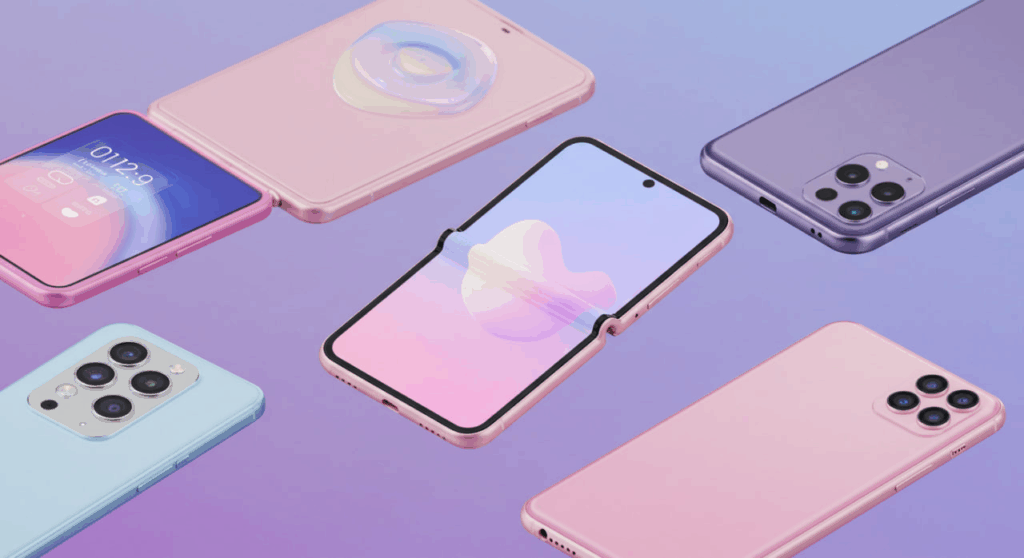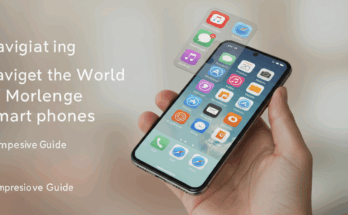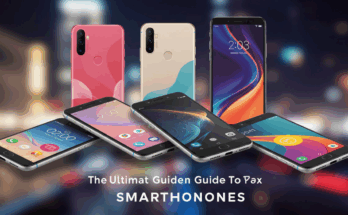The smartphone market in 2025 is a thrilling blend of innovation, style, and cutting-edge technology. From foldable displays to AI-driven cameras, today’s devices are redefining what a phone can do. Whether you’re a tech enthusiast, a casual user, or someone looking for the perfect balance of performance and price, this article dives deep into the best smartphones of 2025. We’ll explore their features, performance, and unique selling points to help you make an informed choice. Let’s get started with our top picks!
Samsung Galaxy Z Fold 7: The Ultimate Foldable Experience
Design and Display
The Samsung Galaxy Z Fold 7 pushes the boundaries of smartphone design with its refined foldable form factor. Unfolded, it boasts a 7.6-inch Dynamic AMOLED 2X display with a 120Hz refresh rate, delivering vibrant colors and buttery-smooth scrolling. When folded, the 6.3-inch cover screen feels like a traditional smartphone, making it versatile for one-handed use. The hinge mechanism is sturdier than ever, and the device is now IP68 water- and dust-resistant, a significant upgrade for durability.
Performance and Software
Powered by the Qualcomm Snapdragon 8 Gen 4, the Z Fold 7 handles multitasking with ease, whether you’re running multiple apps on the split screen or gaming at high settings. Paired with 12GB of RAM and storage options up to 1TB, it’s a powerhouse for professionals and gamers alike. The One UI 7.0, built on Android 15, enhances the foldable experience with intuitive gestures and customizable layouts, making productivity apps like Samsung Notes or Microsoft Office a joy to use.
Camera System
The camera array includes a 50MP main sensor, a 12MP ultra-wide, and a 10MP telephoto with 3x optical zoom. The under-display selfie camera has improved significantly, offering clearer shots for video calls. While low-light photography is impressive, it still trails slightly behind dedicated camera phones like the Pixel 10 Pro. The AI-driven photo editing tools, however, make it easy to enhance images with minimal effort.
Battery and Charging
The 4,400mAh battery supports a full day of heavy use, though intensive multitasking may require a top-up by evening. The 45W fast charging gets you from 0 to 50% in about 25 minutes, and wireless charging is a welcome addition. The device’s premium price tag of around $1,799 reflects its cutting-edge features, but it’s a worthwhile investment for those who want a futuristic phone.

Google Pixel 10 Pro: The AI Photography King
Design and Build
The Google Pixel 10 Pro sports a sleek, minimalist design with a polished aluminum frame and a Gorilla Glass Victus 2 back. Its 6.8-inch OLED display with a 120Hz refresh rate offers crisp visuals and excellent color accuracy. The phone feels premium in hand, and the IP68 rating ensures it can withstand splashes and dust. The signature camera bar on the back gives it a distinctive look that’s both modern and functional.
Performance and AI Features
Equipped with the Google Tensor G4 chip, the Pixel 10 Pro excels in AI-driven tasks. From real-time language translation to voice typing with near-perfect accuracy, the phone feels like a personal assistant. With 16GB of RAM and storage starting at 256GB, it handles everything from gaming to video editing smoothly. Android 15’s clean interface, combined with Google’s promise of seven years of software updates, ensures longevity.
Camera Excellence
The Pixel 10 Pro’s camera system is its crown jewel. The 48MP main sensor, 12MP ultra-wide, and 10MP periscope telephoto with 5x optical zoom deliver stunning photos in any lighting condition. Google’s computational photography, powered by AI, enhances details and colors effortlessly. Features like Magic Eraser and Night Sight continue to set the standard for smartphone photography, making it ideal for content creators.
Battery Life
The 5,000mAh battery lasts a full day, even with heavy use of GPS, streaming, and photography. The 30W fast charging is decent but lags behind competitors like the Galaxy Z Fold 7. Priced at around $999, the Pixel 10 Pro offers incredible value for its AI capabilities and camera prowess, making it a top choice for photography enthusiasts.
Apple iPhone 17 Pro Max: Premium Powerhouse
Design and Display
The iPhone 17 Pro Max features a titanium frame and a 6.9-inch ProMotion OLED display with a 120Hz refresh rate. The always-on display is brighter and more power-efficient than ever, and the Ceramic Shield front adds durability. The slimmed-down Dynamic Island makes notifications less intrusive, enhancing the user experience. Available in new colors like Midnight Blue, it’s as stylish as it is robust.
Performance and Ecosystem
The A19 Pro chip, paired with 8GB of RAM, delivers blazing-fast performance, whether you’re editing 4K videos or playing graphically intensive games like Genshin Impact. iOS 19 introduces customizable home screens and enhanced privacy features, seamlessly integrating with other Apple devices like the MacBook or Apple Watch. The ecosystem’s polish remains unmatched for Apple loyalists.
Camera Capabilities
The triple-lens system includes a 48MP main sensor, a 12MP ultra-wide, and a 12MP telephoto with 5x optical zoom. The new Cinematic Mode now supports 8K video recording, perfect for aspiring filmmakers. Low-light performance is exceptional, rivaling the Pixel 10 Pro. The Photonic Engine enhances image processing, delivering vibrant yet natural-looking photos.
Battery and Pricing
The 4,600mAh battery supports a full day of use, with 30W fast charging and MagSafe wireless charging. Starting at $1,199, it’s a premium device, but the combination of performance, ecosystem integration, and camera quality justifies the cost for Apple fans.
OnePlus 13: The Budget Flagship Contender
Design and Aesthetics
The OnePlus 13 combines a sleek ceramic back with a 6.8-inch AMOLED display, boasting a 120Hz refresh rate and HDR10+ support. Its lightweight design and IP68 rating make it a practical yet premium choice. The alert slider, a OnePlus signature, remains a favorite for quick settings adjustments.
Performance and Software
Powered by the Snapdragon 8 Gen 4 and up to 16GB of RAM, the OnePlus 13 rivals top-tier flagships in speed and multitasking. OxygenOS 15, based on Android 15, offers a clean, bloat-free experience with customization options that rival stock Android. It’s a great choice for users who want a near-stock Android experience with added flair.
Camera System
The 50MP main camera, 13MP ultra-wide, and 8MP telephoto with 3x optical zoom deliver solid performance, though they don’t quite match the Pixel or iPhone in low-light scenarios. Hasselblad’s color tuning adds a professional touch to photos, making them Instagram-ready straight out of the camera.
Battery and Value
The 6,000mAh battery is a standout, lasting up to two days on a single charge. The 100W SUPERVOOC charging gets you to 100% in under 30 minutes. Priced at around $899, the OnePlus 13 offers flagship-level features at a more accessible price, making it a fantastic value pick.
Comparison: Which Phone Suits You?
Each of these smartphones caters to different needs. The Samsung Galaxy Z Fold 7 is ideal for multitaskers and those who want a futuristic foldable device. The Google Pixel 10 Pro is perfect for photography enthusiasts and AI lovers. The iPhone 17 Pro Max is a no-brainer for Apple ecosystem users, while the OnePlus 13 offers flagship performance at a budget-friendly price. Consider your priorities—whether it’s camera quality, battery life, or software ecosystem—before making a decision.
FAQs
Which smartphone has the best camera in 2025?
The Google Pixel 10 Pro leads in photography due to its AI-driven computational photography, excelling in low-light conditions and offering tools like Magic Eraser. The iPhone 17 Pro Max is a close second, especially for video recording.
Are foldable phones like the Galaxy Z Fold 7 durable?
Yes, the Galaxy Z Fold 7’s improved hinge and IP68 rating make it more durable than earlier foldables, though it’s still slightly less rugged than traditional smartphones.
Is the OnePlus 13 a good value for money?
Absolutely. Priced at around $899, the OnePlus 13 offers flagship-level performance, a great display, and excellent battery life, making it a strong contender for budget-conscious buyers.
How long will these phones receive software updates?
The Pixel 10 Pro offers seven years of updates, the iPhone 17 Pro Max typically gets five to six years, the Galaxy Z Fold 7 gets four years, and the OnePlus 13 promises four years of major updates.
Which phone is best for gaming?
The iPhone 17 Pro Max and Galaxy Z Fold 7 are top choices for gaming due to their powerful chips and high-refresh-rate displays, with the Z Fold 7’s larger screen offering a unique advantage.



